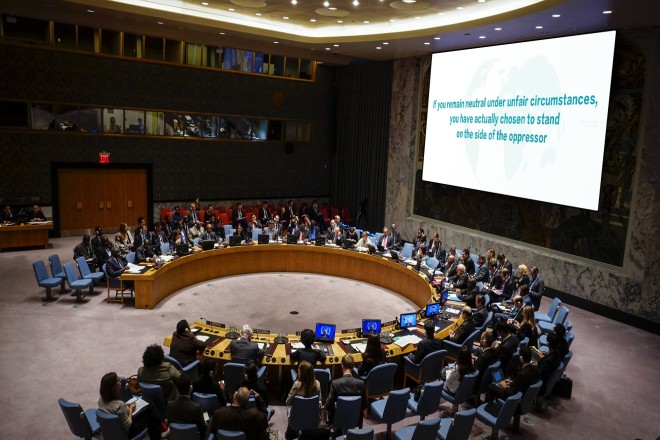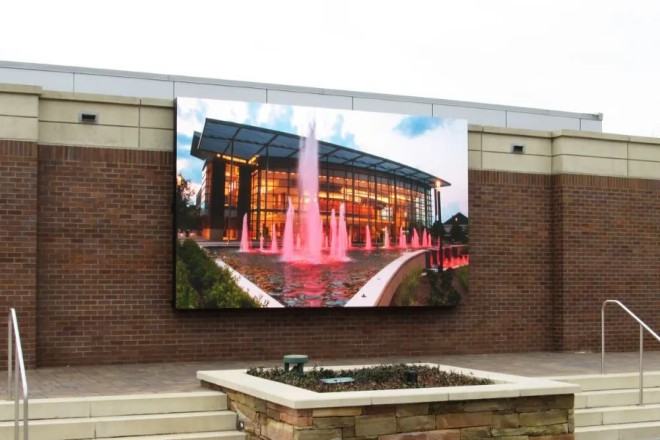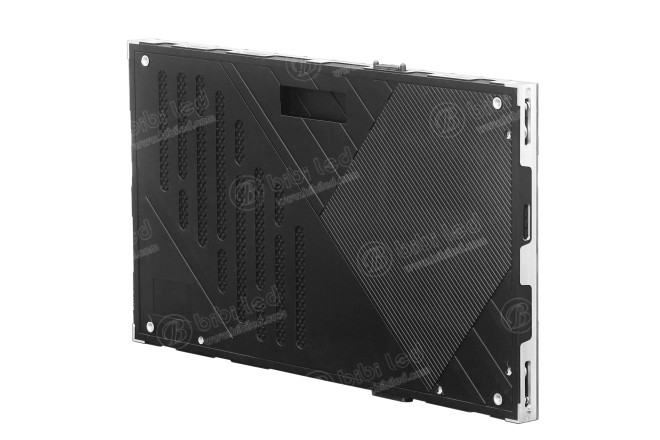소개

정보 폭발 시대로 접어들면서, 어떻게 정부 기관이 정보를 효율적이고 정확하게 전달하는 것은 국민의 신뢰와 만족에 직접적으로 연관됩니다.
발광 다이오드 표시 스크린현대 기술의 빛나는 진주인 디스플레이는 탁월한 디스플레이 효과와 유연한 디스플레이 방식을 통해 정부 기관의 정보 전달 효율성을 높이는 비밀 무기가 되고 있습니다.
하지만 시중에 LED 디스플레이 화면 제품이 매우 다양한데, 어떻게 하면 훌륭한 제품을 구별하고 우리의 필요에 가장 적합한 제품을 선택할 수 있을까요?
1. 정부기관이 LED 디스플레이 스크린을 선택할 때 고려해야 할 사항

정부 기관이 LED 디스플레이 화면 설치를 고려할 때 다양한 옵션에 직면하게 되는데, 각 옵션은 특정 요구 사항, 환경 및 예산에 따라 달라집니다.
정부 기관이 더 잘 이해하고 정보에 입각한 결정을 내릴 수 있도록, LED 디스플레이 화면을 선택할 때 고려해야 할 주요 요소에 대한 자세하고 이해하기 쉬운 해석은 다음과 같습니다.
1) 사용 환경 및 요구 사항
1.1) 실내와 실외의 차이점:
- 실내:
실내 LED 디스플레이 일반적으로 건물 내부에 설치되고 비나 기타 악천후 조건을 피하므로 추가 방수가 필요하지 않습니다.
그러나 실내 디스플레이의 경우 장기간 사용 시 최적의 상태를 유지하려면 방진, 긁힘 방지, 내화 기능을 고려해야 할 수도 있습니다.
- 집 밖의:
옥외 LED 디스플레이 비, 직사광선, 고온 및 저온 등 극한의 기상 조건을 견딜 수 있도록 강력한 방수, 방진, 내후성이 있어야 합니다.
이러한 디스플레이는 일반적으로 더 견고한 소재와 더 복잡한 방열 시스템을 사용하여 혹독한 환경에서도 안정적으로 작동하도록 보장합니다.
1.2). 시청 거리 그리고 도트 피치:
- 도트 피치(P 값):
도트 피치는 디스플레이에서 인접한 픽셀 사이의 거리를 나타냅니다. 도트 피치가 작을수록 픽셀 밀도가 높아지고 이미지가 더 선명해집니다. 하지만 그만큼 가격도 높아집니다.
- 시거리:
시청 거리에 따라 필요한 도트 피치 크기가 결정됩니다. 예를 들어, 회의실이나 리셉션 홀과 같이 가까이에서 시청하는 경우에는 선명하고 섬세한 이미지를 보장하기 위해 더 작은 도트 피치(예: P2 또는 P2.5)의 디스플레이를 선택할 수 있습니다. 반면, 광장이나 거리처럼 멀리서 시청하는 경우에는 비용을 절감하고 좋은 시청 효과를 유지하기 위해 더 큰 도트 피치(예: P6 또는 P10)의 디스플레이를 선택할 수 있습니다.
1.3) 설치 위치 및 레이아웃:
- 위치 선택:
디스플레이의 설치 위치는 관객이 관람하기 편리한 곳에 위치해야 하며, 안전과 미관을 고려해야 합니다.
예를 들어, 홀이나 회의실의 경우 벽면 장착이나 매립형 설치를 선택할 수 있습니다. 실외의 경우 디스플레이가 안정적이고 유지 관리가 쉬운지 확인하기 위해 매달거나 기둥에 설치하는 것을 고려해야 할 수도 있습니다.
- 레이아웃 계획:
설치 위치를 계획할 때는 색상 매칭, 크기 비율 등 디스플레이와 주변 환경의 조화를 고려하여 전반적인 시각적 효과의 아름다움과 통일성을 확보해야 합니다.
2) 디스플레이 효과 및 선명도
2.1) 도트 피치 및 해결:
도트 피치가 작을수록 해상도가 높아지고 이미지가 더욱 선명해집니다. 하지만 그만큼 가격도 높아집니다. 예산과 시청 니즈를 고려하여 제품을 선택해야 합니다.
고해상도 디스플레이는 더 많은 세부 사항과 색상 레벨을 표현할 수 있어 이미지를 더욱 생생하고 실제처럼 만들 수 있습니다.
- 색상 재현 및 채도:
MTSC 방송급 색 영역 재현 기능을 갖춘 디스플레이를 선택하면 풍부하고 사실적인 색상을 보장하고 시청 경험을 향상시킬 수 있습니다. 이 디스플레이는 다양한 색상의 실제 모습을 정확하게 복원하여 이미지를 더욱 생생하고 선명하게 만들어 줍니다.
색상 채도가 높을수록 이미지가 더욱 입체적이고 다층적이 되어, 관객이 더욱 현실적인 시각적 효과를 느낄 수 있습니다.
2.2). 명도 대조:
- 명도:
고휘도 디스플레이는 강한 빛 환경에서도 선명한 디스플레이 효과를 유지할 수 있습니다. 특히 직사광선과 같은 강한 빛을 견뎌야 하는 실외 디스플레이의 경우, 이러한 특성이 매우 중요합니다.
- 차이:
높은 대비는 이미지의 레이어링을 강화하여 이미지를 더욱 입체적이고 생생하게 만들어 줍니다. 대비가 높을수록 이미지의 밝은 부분과 어두운 부분이 더욱 선명해지고 디테일이 더욱 풍부해집니다.
3) 안정성 및 내구성
- 품질 보증:
디스플레이 품질을 보장하려면 일반 제조업체의 제품을 선택하는 것이 중요합니다. 일반 제조업체는 일반적으로 고품질 디스플레이를 생산하기 위해 첨단 생산 공정과 엄격한 품질 관리 시스템을 갖추고 있습니다.
동시에 일반 제조업체는 후속 유지관리 및 수리를 용이하게 하기 위해 포괄적인 애프터 서비스와 기술 지원을 제공합니다.
- 내구성:
디스플레이의 내구성은 소재, 구조, 방열 시스템 등 여러 측면에 따라 달라집니다.
예를 들어, 더 강한 소재를 사용하면 디스플레이의 충격 저항성을 향상시킬 수 있으며, 고급 방열 시스템을 사용하면 장기간 사용 시 디스플레이의 온도를 안정적으로 유지하고 수명을 연장할 수 있습니다.
선택할 때 디스플레이의 내구성을 평가하기 위해 보증 기간, 사용 수명 등의 매개변수를 주의 깊게 살펴볼 수 있습니다.
4) 정보 다양성 및 업데이트 효율성
- 디스플레이 콘텐츠 다양성:
정부 기관에서는 일반적으로 텍스트, 사진, 비디오 등 다양한 유형의 정보를 표시해야 합니다. 따라서 디스플레이 화면을 선택할 때 여러 형식의 입력과 표시를 지원하는지 확인해야 합니다.
여기에는 다양한 이미지 형식(JPEG, PNG 등), 비디오 형식(MP4, AVI 등), 텍스트 형식(TXT, DOC 등) 지원이 포함됩니다.
동시에, 정부 기관이 필요에 따라 언제든지 표시 내용을 조정할 수 있도록 표시 화면에는 유연한 조판 및 편집 기능도 있어야 합니다.
- 콘텐츠 업데이트 효율성:
효율적인 콘텐츠 관리 시스템을 사용하면 정보를 시기적절하게 업데이트하고 디스플레이 화면의 활용률과 홍보 효과를 높일 수 있습니다.
선택할 때 시스템이 원격 업데이트, 예약 재생 및 기타 기능을 지원하는지 여부를 주의해서 살펴보세요.
원격 업데이트 기능을 사용하면 정부 기관에서 현장 작업을 하지 않고도 네트워크를 통해 새로운 콘텐츠를 디스플레이 화면으로 전송할 수 있으며, 예약 재생 기능을 사용하면 사전 설정된 일정에 따라 지정된 콘텐츠를 자동으로 재생하여 인력과 시간 비용을 절감할 수 있습니다.
2. 정부기관에서 주로 선택하는 LED 디스플레이 화면 종류
정부 기관은 일반적으로 특정 사용 시나리오와 요구 사항을 고려하여 LED 디스플레이 스크린을 선택합니다. 다음은 정부 기관에서 일반적으로 선택하는 여러 유형의 LED 디스플레이 스크린과 그 특징입니다.

1) 실내 HD LED 디스플레이
1.1). 모델:
P2, P2.5, P3 등
1.2) 시나리오 사용:
회의실, 강의실 등 실내에서 많이 사용 전시회 홀 등
1.3). 특징:
작은 도트 피치: 이 모델의 LED 디스플레이 화면의 도트 피치는 작아서 그림을 더 섬세하고 선명하게 볼 수 있습니다.
고해상도: 고해상도는 더 많은 세부 사항과 색상 레벨을 표현할 수 있어 이미지를 더욱 생생하고 사실적으로 만들어줍니다.
가까운 거리에서 보기에 적합: 도트 간격이 작기 때문에 이러한 디스플레이는 왜곡이나 흐릿함 없이 가까운 거리에서 보기에 적합합니다.

2) 실외 방수 LED 디스플레이
2.1) 시나리오 사용:
광장, 거리, 정부 건물 외벽 등 야외 환경에 적합합니다.
2.2). 특징:
높은 명도: 야외 디스플레이 화면은 직사광선 등 강한 빛의 영향을 견뎌야 하므로 강한 빛 조건에서도 선명한 디스플레이를 보장하기 위해 높은 밝기 특성을 갖춰야 합니다.
방수 및 방진: 특수 소재와 공정으로 제작되어 방수 및 방진 기능을 갖추고 있으며, 혹독한 실외 환경에서도 정상적으로 작동할 수 있습니다.
강력한 내후성: 고온, 저온, 습도 등 극한의 기상 조건을 견뎌내 디스플레이 화면의 안정성과 내구성을 보장합니다.

3). 소형 피치 LED 디스플레이
3.1) 시나리오 사용:
일반적으로 지휘 센터, 파견 센터, 정부 회의실 및 고정밀 디스플레이 효과가 필요한 기타 경우에 사용됩니다.
3.2). 특징:
매우 작은 도트 피치: 소형 피치 LED 디스플레이의 도트 피치는 일반적으로 1mm 미만이어서 그림이 더 섬세해지고 더 많은 세부 사항과 색상 수준을 표현할 수 있습니다.
고해상도 및 고대비: 고해상도 및 고대비는 이미지를 더욱 선명하고 사실적으로 만들어 데이터 시각화 및 고화질 비디오 재생에 적합합니다.
높은 유연성: 소형 피치 LED 디스플레이 화면은 일반적으로 여러 개의 모듈로 구성되며, 필요에 따라 다양한 크기와 해상도의 디스플레이 벽으로 유연하게 결합하여 다양한 복잡한 장면의 요구를 충족할 수 있습니다.
강력한 안정성: 고품질 LED 칩과 전자 부품으로 제작되어 안정성과 신뢰성이 뛰어나 장기간 사용 시에도 최상의 상태를 유지할 수 있습니다.
3. BIBILED의 LED 디스플레이 화면 추천
실내 소형 LED 디스플레이 화면
BIBILED 실내 소형 LED 디스플레이 화면은 정부 기관에서 탁월한 성능을 발휘합니다. 끊김 없는 접합 기술은 회의 내용의 무결성과 선명도를 보장하며, 색상과 밝기가 매우 일정하여 차트와 그림을 섬세하고 사실적으로 표현합니다.
넓은 시야각 덕분에 모든 각도의 시청자가 선명하게 볼 수 있으며, 높은 명암비와 화면 주사율은 화상 회의와 같은 역동적인 장면에 적합합니다. 초슬림 디자인으로 공간을 절약하고 설치 및 유지 관리가 간편합니다.
효율적인 방열과 무소음 작동으로 편안한 회의 환경을 제공합니다. 긴 수명과 낮은 유지 보수 비용으로 운영 비용을 절감하고, 지능형 관리로 일상적인 유지 보수를 간소화합니다. BIBILED 디스플레이는 회의 효율성과 정부 기관의 이미지를 향상시킵니다.


결론
요약하자면, 정부기관이 LED 디스플레이 화면을 선택할 때는 사용 환경, 디스플레이 효과, 안정성 및 내구성, 정보의 다양성 및 업데이트 효율성 등을 종합적으로 고려하여 선택한 제품이 정부기관의 다양한 정보 디스플레이 요구를 충족할 수 있는지 확인해야 합니다.
실제 사례를 분석해 보면, 올바른 선택은 정부기관의 공공정보 서비스 수준을 향상시킬 뿐만 아니라, 눈에 보이지 않게 정부의 신뢰도와 국민의 만족도를 높일 수 있다는 것을 알 수 있습니다.
마지막으로 LED 디스플레이 화면에 대해 더 알고 싶다면, 우리에게 연락해주세요.
